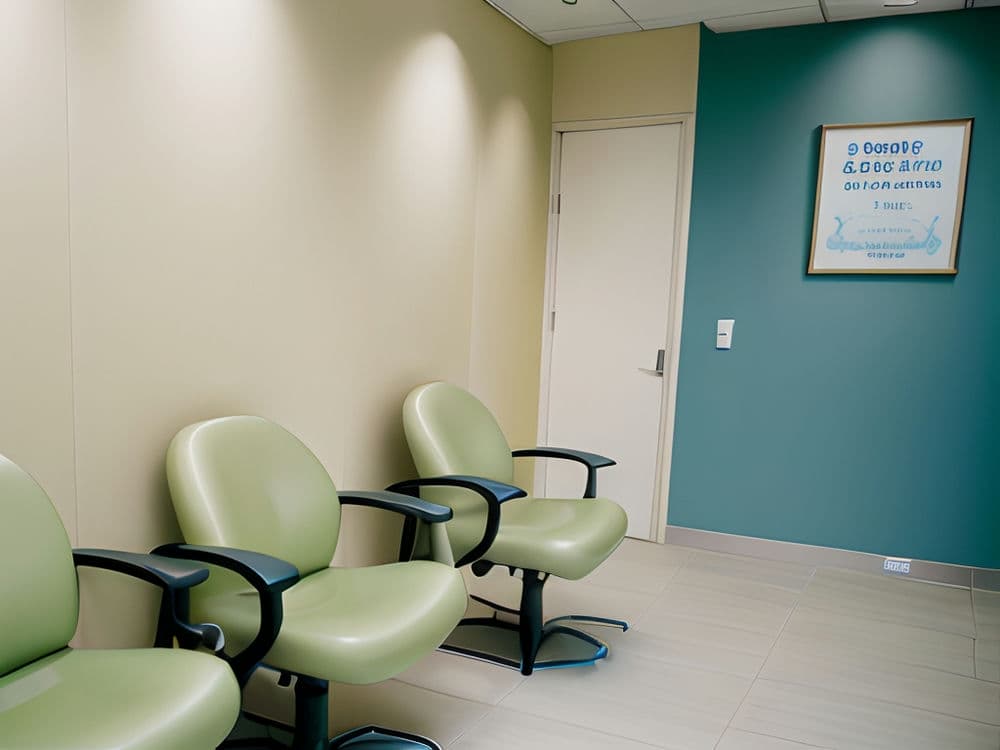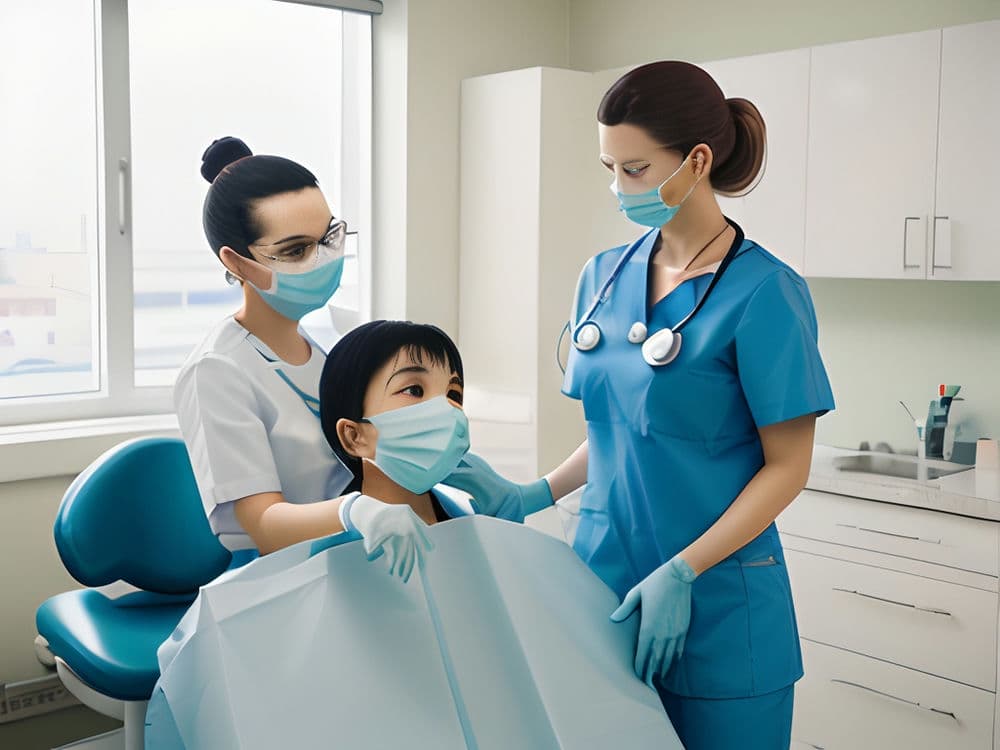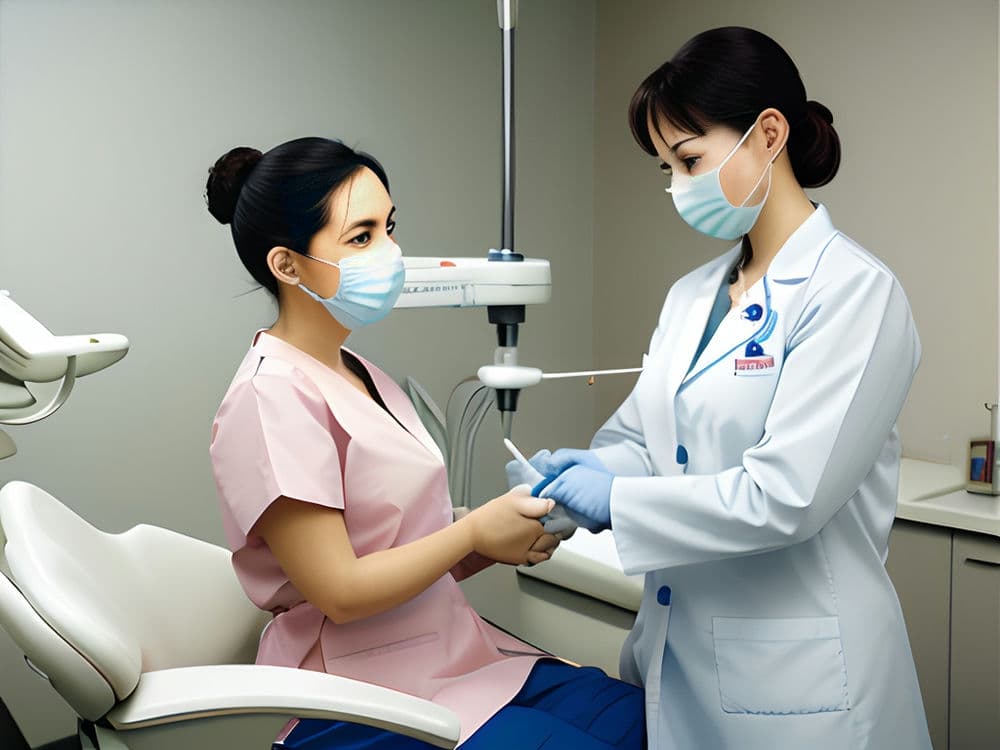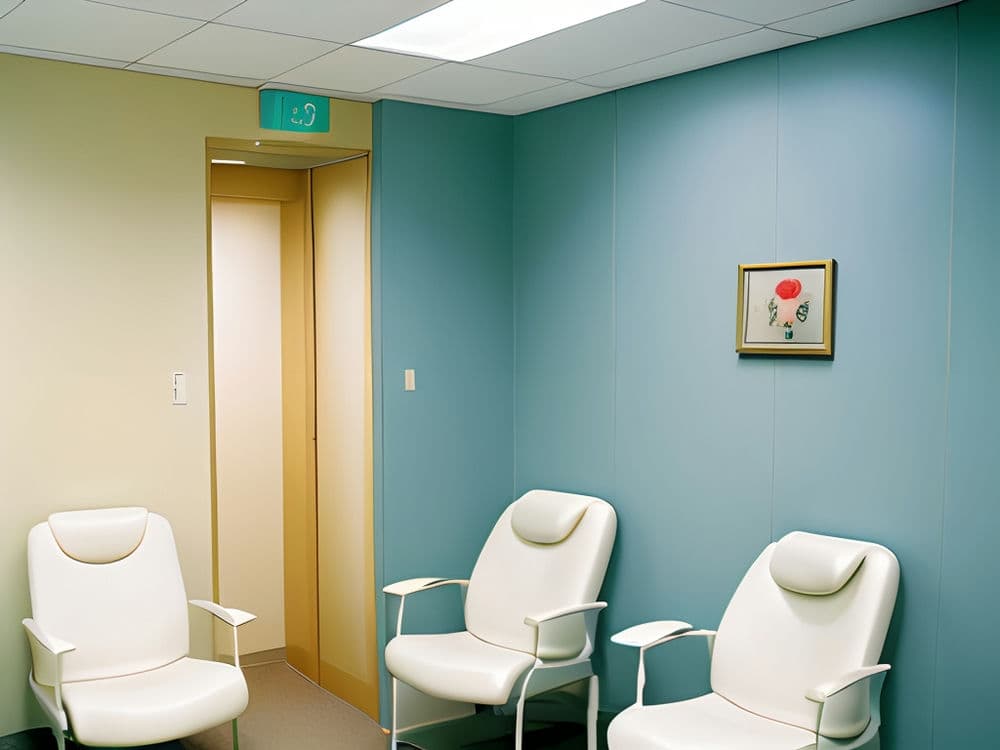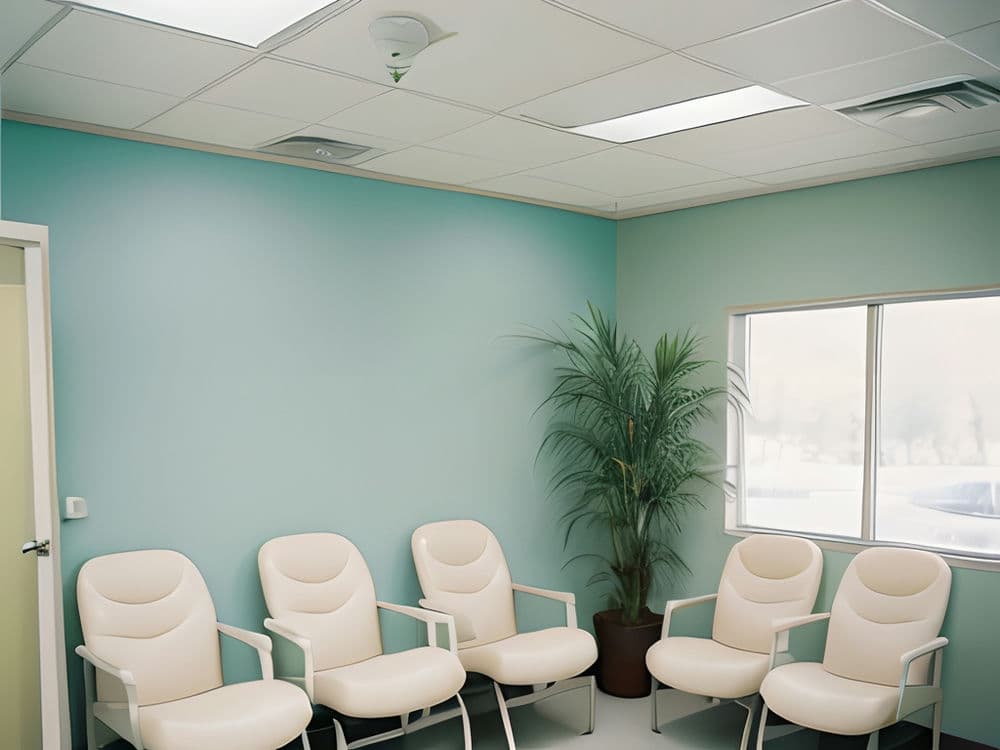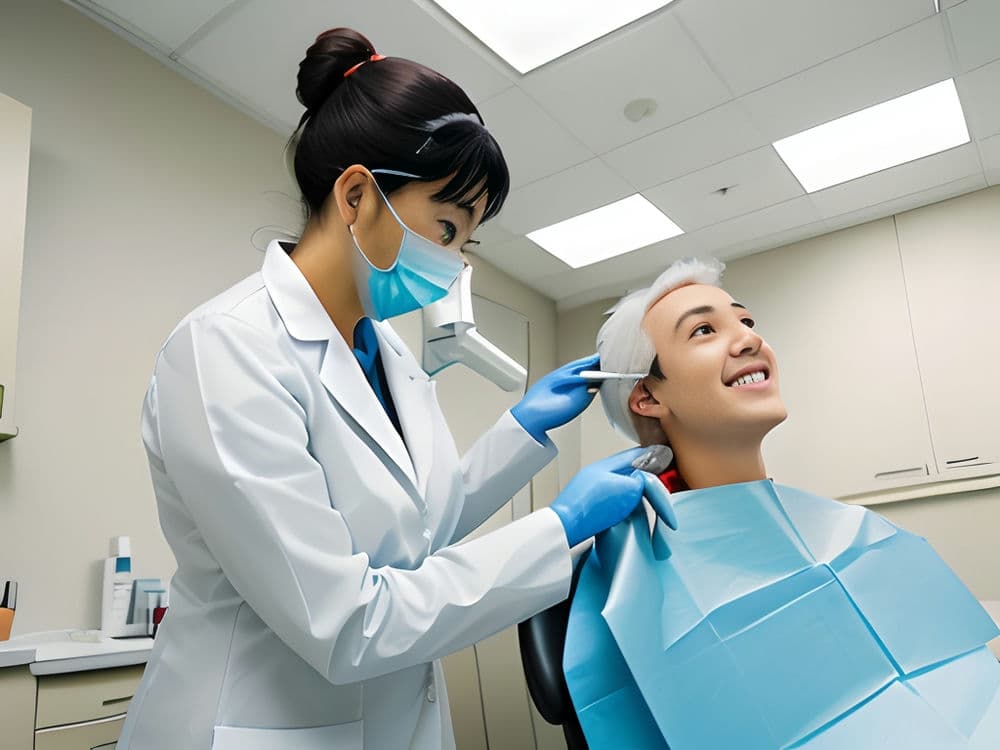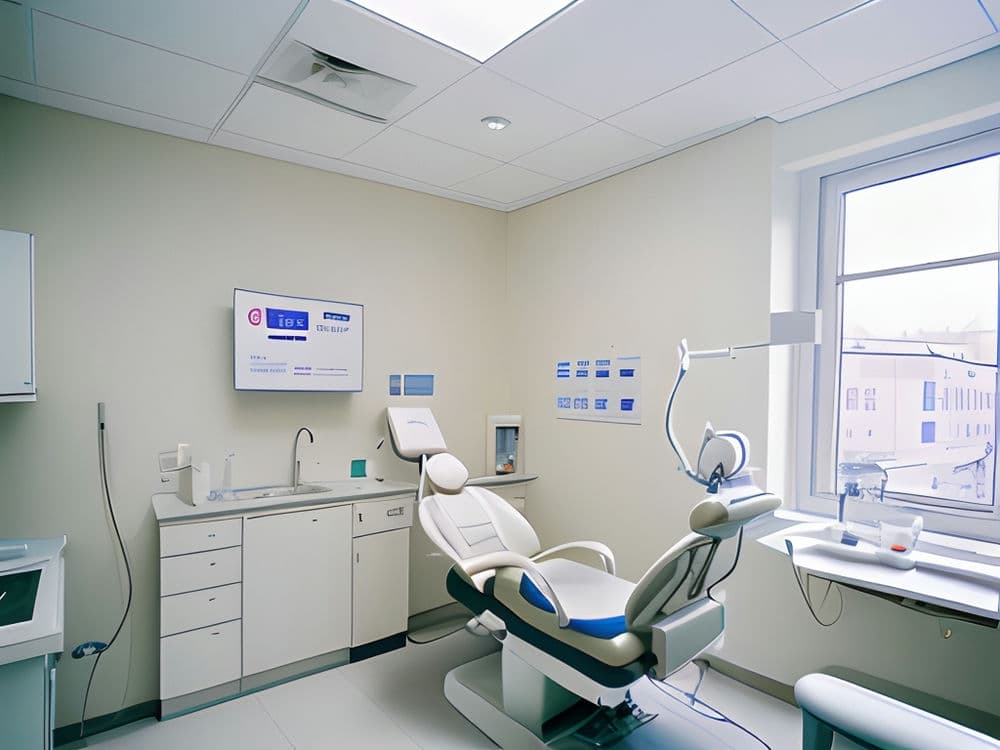In the dynamic landscape of dental services, patient feedback has emerged as a powerful force shaping both the quality and delivery of care. As such, this feedback significantly influences strategies aimed at encouraging repeat visits and attracting new patients to a practice.
Patient feedback serves as an essential barometer for gauging patient satisfaction and identifying areas for improvement. For instance, when patients praise specific aspects of their experience, such as gentle treatment or minimal wait times, dentists can recognize these practices' strengths. Conversely, constructive criticism points to opportunities for enhancement—be it in communication, procedure comfort, or office ambiance—which can be pivotal in refining the overall patient experience.
By actively soliciting and responding to patient feedback, dental practices demonstrate a commitment to listening and adapting to their clientele's needs—a behavior that fosters trust and loyalty among existing patients. This sense of being heard and valued not only encourages these individuals to return for future dental work but also increases the likelihood that they will recommend the practice to friends and family.
Moreover, in today's digital age where online reviews are readily accessible, prospective patients often turn to these testimonials when selecting a dentist. Glowing reviews have the power to attract newcomers who might be searching for positive healthcare experiences shared by others. In contrast, negative reviews can deter potential patients unless they see evidence of a practice's proactive engagement with such feedback—using it as a springboard for improvement rather than ignoring it.
Ultimately, embracing patient feedback is integral to creating an environment that both retains current patrons and appeals to prospective ones. By prioritizing this input in service delivery improvements and marketing strategies alike, dental professionals can ensure their practice remains competitive in an industry where consumer opinions carry significant weight.
The Influence of Patient Feedback on Dental Services: Enhancing Staff Morale and Motivation
In the realm of dental services, patient feedback emerges as a pivotal influencer, not only shaping the quality of care but also serving as a catalyst for bolstering staff morale and motivation. Actively soliciting and thoughtfully analyzing feedback from patients can lead to transformative effects within a dental practice.
Firstly, when patients articulate satisfaction with their dental experience, this positive reinforcement can significantly uplift the spirits of dental professionals. Recognition for excellent service instills pride in one's work and reaffirms the value of the effort invested. Conversely, constructive criticism offers a transparent lens through which staff can view their performance, identifying opportunities for improvement that might otherwise go unnoticed.
A culture that values patient opinions fosters an environment where staff members feel engaged and motivated to excel. Knowing that their actions directly impact patient perceptions compels staff to consistently deliver high-quality care. As they incorporate patient insights into daily practices, they become active participants in an ongoing process of refinement and growth.
Moreover, incorporating patient feedback into recognition programs can further enhance morale. Acknowledging outstanding employee performance based on direct testimonials from those served adds authenticity to praise and rewards. This tangible acknowledgment can drive individuals to strive for continued excellence in their interactions with patients.
However, managing feedback effectively requires tactful communication strategies to ensure that any negative input is used constructively rather than detrimentally affecting morale. Regular team meetings where both positive experiences and areas for development are discussed can normalize receiving feedback as part of professional growth rather than personal critique.
Ultimately, viewing patient feedback as an invaluable resource aids in creating a virtuous cycle within dental services — improved quality care leads to better reviews which then feed back into higher staff morale and motivation levels. Embracing this dynamic elevates the standard of service delivery while simultaneously nurturing a positive work atmosphere conducive to success.
By acknowledging the profound influence patient feedback has on practitioners' well-being at work, dental services providers can unlock potential within their teams — transforming routine visits into exceptional healthcare experiences for everyone involved.
In the realm of dental services, patient feedback stands as a critical component for continuous improvement and high-quality care provision. Negative feedback is particularly influential, as it often shines light on areas that might otherwise go unnoticed or unaddressed by practitioners.
Traditionally, negative feedback may be perceived with defensiveness or discomfort by dental professionals. However, embracing this form of critique can lead to transformative changes within a practice. By identifying specific concerns—whether related to the comfort of procedures, the clarity of communication from staff, or the effectiveness of treatments—dentists can take actionable steps to enhance their service delivery.
Moreover, negative feedback provides an opportunity for dentists to engage in open dialogue with patients, fostering trust and demonstrating commitment to patient satisfaction. Through such interactions, patients feel heard and valued which in turn can lead to increased loyalty and positive word-of-mouth referrals despite initial dissatisfaction.
To effectively utilize negative feedback, dental practices need systems that encourage honest patient reviews and methodologies for analyzing such data. Regular training sessions focused on incorporating constructive criticism into practice protocols can empower all staff members—from receptionists to hygienists—to contribute towards a culture of excellence.
Implementing improvements based on negative feedback also necessitates monitoring and follow-up measures. This ensures that changes made are actually addressing the issues raised by patients and leading to tangible enhancements in service quality. Feedback loops thus become instrumental in not only rectifying weaknesses but also in promoting an environment where excellence is continuously pursued.
In conclusion, while it may challenge conventional attitudes towards criticism, negative feedback is indispensable for discerning opportunities for improvement within dental services. When harnessed constructively, it propels practices towards greater heights of patient care—a goal central to the ethos of any healthcare profession.
The Influence of Patient Feedback on Dental Services: Addressing Common Complaints
Patient feedback has become an integral component in refining dental services and enhancing patient satisfaction. In a landscape where choice abounds, dentists cannot afford to overlook the complaints that patients frequently voice. Among these are prolonged wait times, inadequate pain management, and poor communication—issues that can significantly detract from a patient's experience.
Wait times are often the first hurdle in the patient journey. A perception of wasted time can immediately start the visit off on the wrong foot. Dentists must therefore strive to optimize scheduling systems and ensure efficient office workflows to minimize delays. By employing advanced booking software and adhering to a meticulously planned schedule, wait times can be substantially reduced, fostering a sense of respect for patients' valuable time.
Pain management is another critical aspect of dental care that requires attention. The fear of pain is deeply entrenched in many patients' minds when considering dental treatments. Dentists who actively seek out and apply new analgesic techniques demonstrate their commitment to patient comfort. Additionally, offering thorough explanations about what patients should expect during procedures can alleviate anxiety surrounding potential discomfort.
Finally, communication issues often stand between dentists and satisfied patients. Clear dialogue regarding treatment plans, costs, and preventive care measures can bridge this gap. When dentists encourage questions and provide lucid answers, they cultivate an environment of trust—a fundamental element in any healthcare setting.
In conclusion, addressing common complaints through active listening to patient feedback serves as a catalyst for better dental services. When dentists commit to reducing wait times, prioritizing pain management, and improving communication strategies, they not only elevate the standard of care but also foster stronger relationships with their patients—an invaluable asset in today's competitive healthcare marketplace.
Implementing changes based on constructive criticism is an essential component for improving dental services. Patient feedback offers invaluable insights into the patient experience, highlighting strengths and pinpointing areas needing enhancement.
Dental practices that actively seek and embrace this type of commentary are often seen as patient-centric, showing a commitment to excellence. Constructive criticism isn't merely about finding faults; it's a stepping stone toward elevating service quality. A dentist may excel technically but might overlook aspects like communication or comfort, which are crucial to patient satisfaction.
When patients voice their experiences, they provide a unique perspective that practitioners and staff might not notice from the inside. For instance, long wait times, perceived rushed appointments, or inadequate explanations of procedures can significantly impact patient trust and loyalty.
By implementing changes in response to such feedback, dental services can evolve to meet expectations better. This could involve training staff for better interpersonal skills, streamlining appointment scheduling processes for efficiency, or investing in new technologies for pain management.
Moreover, when patients observe their suggestions being acted upon, they feel valued and respected. This reinforces their relationship with the dental practice and encourages ongoing engagement—patients know that their voices matter and that their feedback contributes to shaping a better service experience for everyone.
In conclusion, leveraging patient feedback through actionable change is vital for any dental service aiming to thrive in today’s healthcare environment. It demonstrates adaptability and dedication to improvement while fostering a culture of openness where both patients and providers work together towards optimal oral health outcomes.
In the realm of dental healthcare, the voice of the patient has grown increasingly pivotal in shaping service quality and practice success. Dental offices that harness patient feedback effectively often uncover a treasure trove of insights that can propel their services towards excellence. These case studies highlight how some dental practices have turned patient critiques into remarkable triumphs.
One such narrative emerges from a small-town clinic known for its warmth but criticized for wait times. Patients expressed frustration over prolonged periods spent in the waiting area, which dampened their overall experience. Taking these observations to heart, the practice implemented a streamlined appointment system and improved their scheduling efficiency. The result? A dramatic slash in wait times and a surge in patient satisfaction scores, showcasing how direct feedback can translate into swift, beneficial change.
Another success story involves a metropolitan dental group faced with negative reviews regarding patient comfort during procedures. By actively soliciting detailed feedback through surveys and suggestion boxes, they identified specific areas needing attention – namely better anesthesia options and gentler techniques during treatments. After training staff on new methods and investing in advanced pain management technologies, the group saw not only an uptick in positive testimonials but also an increase in referrals, thus amplifying their reputation as leaders in comfortable dental care.
Lastly, consider a high-tech dental office acclaimed for innovation yet suffering from impersonal service comments online. Recognizing this gap between cutting-edge technology and human connection, the practice initiated 'smile sessions' where patients could discuss concerns freely with staff without feeling rushed. This move fostered stronger relationships between patients and providers while also offering valuable qualitative data on how to refine interpersonal skills within the team.
These vignettes illustrate that by embracing rather than evading critique, dental practices stand to gain immensely; transforming potential stumbling blocks into stepping stones toward unparalleled service delivery. Patient feedback is more than just words; it's an influential compass guiding practitioners towards continuous improvement and ultimate success within the competitive landscape of dental services.
In summary, these case studies demonstrate that when dental practices listen attentively to their patients' voices and act upon them conscientiously, they unlock powerful opportunities for growth and excellence – crafting success stories one smile at a time.
The Impact of Patient Feedback on Dental Services
In the dynamic landscape of dental care, patient feedback has emerged as a pivotal element for practice enhancement and business expansion. Innumerable dental services have harnessed this potent tool, leading to remarkable transformations.
One illustrative example is Small Town Smiles, a clinic that was once struggling with client retention rates. By actively soliciting feedback through surveys and suggestion boxes, they unveiled critical insights into their patients' experiences. Patients expressed dissatisfaction with prolonged wait times and outdated magazines in the waiting area. In response, the clinic invested in streamlining appointment scheduling and refreshing their waiting lounge with engaging reading material and an interactive children's corner. These changes not only improved patient satisfaction but also elevated word-of-mouth referrals, substantially increasing their clientele base.
Another success story comes from Urban Orthodontics, which used patient reviews to identify a gap in communication regarding treatment plans. They instituted clear visual aids and detailed discussions for each procedure, thereby bolstering trust and comprehension among patients. This proactive approach led to enhanced online reviews that brought about a surge in new patients seeking transparent and educative dental services.
Similarly, Pearls of Wisdom Dentistry recognized through feedback that working adults found it challenging to schedule appointments during conventional hours. They extended their operating hours to include evenings and weekends, resulting in significant growth in appointments and customer appreciation for the convenience offered.
The instances above exemplify how attentiveness to patient feedback can yield substantial improvements within dental practices. It highlights that listening to consumers is not merely beneficial but imperative for thriving in today's competitive healthcare market. As dental services continue to adapt based on patient input, they cultivate loyalty, improve service quality, and ultimately experience business growth – all testaments to the profound influence of patient feedback on shaping the future of dental care delivery.
The practice of dentistry is deeply rooted in trust and effective communication between the dentist and their patients. Patient feedback plays a pivotal role in shaping dental services, ensuring that care is not only proficient but also aligns with patient expectations and needs. However, soliciting genuine feedback from patients can be fraught with challenges that must be navigated carefully to tap into this valuable resource.
One significant obstacle in obtaining honest patient input stems from the inherent power differential in the dentist-patient relationship. Patients may feel intimidated or reluctant to express dissatisfaction for fear of offending the professional tasked with their care. This delicate dynamic requires dentists to foster an environment where open dialogue is encouraged and negative feedback can be provided without apprehension.
Another issue arises from the social desirability bias — patients often want to appear agreeable or polite, leading them to withhold true criticisms or concerns. To overcome this, practices might implement anonymous surveys or suggestion boxes which provide a safe space for unfiltered opinions.
Moreover, time constraints during appointments can limit opportunities for thorough discussions about experiences and preferences. By dedicating specific times for feedback collection outside of regular visits, such as follow-up calls or online platforms, more comprehensive insights can be gathered.
The format of solicited feedback also influences its candor; close-ended questions may yield superficial responses while open-ended questions encourage detailed narratives that are more telling of the actual patient experience.
Accurately interpreting feedback poses another challenge. Quantitative data like ratings offer clear metrics but may lack context, whereas qualitative comments provide depth but can be subjective and harder to analyze systematically.
Despite these hurdles, overcoming them is crucial since genuine patient feedback directly impacts service improvement. It informs practitioners about what aspects are working well and what areas require attention—be it in technical skills, bedside manner, office ambiance, or administrative processes.
In conclusion, honest patient assessments are indispensable for advancing dental services. The challenges in obtaining truthful critiques necessitate innovative approaches that consider human psychology and communication strategies. When done successfully, it creates a cycle of continuous improvement where enhanced services lead to better patient outcomes and satisfaction—a win-win scenario for all involved parties.
In the realm of dental services, patient feedback stands as a pivotal element influencing the quality and effectiveness of care provided. Anonymity in gathering this feedback emerges as a crucial factor to ensure the candidness and reliability of responses. By guaranteeing that personal identifiers are detached from their commentary, patients feel a greater sense of security to provide unfiltered opinions and experiences.
This veil of anonymity encourages honest communication, which is paramount for dentists who seek to refine their practice. Without fear of repercussion or embarrassment, patients can freely discuss both positive encounters and areas that warrant improvement. This transparency enables dental professionals to identify specific aspects of their service needing attention—be it customer service, waiting times, pain management techniques, or even the cleanliness of the clinic.
An anonymous feedback system also helps in mitigating bias that might otherwise taint the data collected. Patients tend to be more straightforward when they know their identity is concealed; hence, dental practices receive a more accurate representation of patient sentiment. Consequently, this authentic data provides a foundation upon which practices can build actionable strategies for enhancement.
Moreover, by acting on anonymous critiques and commendations alike, dentists demonstrate their commitment to adapting based on patient needs—a gesture that strengthens trust even though individual voices remain unrecognized. It signals to clientele that their input is not only welcomed but valued highly enough to instigate change.
In summary, ensuring anonymity in patient feedback collection serves as an essential conduit for truthful evaluations within dental services. It grants patients a voice without fear and equips practitioners with genuine insights necessary for advancing patient care standards. As such, anonymity doesn't just encourage honesty; it catalyzes an environment conducive to continuous improvement—a cornerstone in the pursuit of excellence in any healthcare discipline.
In the realm of dental care, patient feedback stands as a cornerstone for fostering service excellence and driving improvements. Yet, amid this beneficial exchange, an unintended consequence emerges: feedback fatigue. This phenomenon describes a state where patients, inundated by constant requests to evaluate their experiences, begin to disengage from the feedback process.
To examine the influence of patient feedback on dental services while acknowledging the issue of feedback fatigue, we must first appreciate the role that such input plays in shaping care quality. Feedback serves as a critical lens through which practitioners can view their service delivery through the eyes of those they serve. Positive comments reinforce effective practices and boost morale, while constructive criticism offers invaluable insights into areas ripe for refinement.
Nevertheless, when patients are bombarded with surveys and questionnaires after every visit or procedure, their willingness to participate wanes. The repetitive nature of these solicitations can lead to indifference or annoyance—a sentiment that not only diminishes the quantity but also jeopardizes the quality of responses received.
Consequently, dental service providers face a delicate balancing act. To mitigate feedback fatigue among patients without compromising valuable insights gained from their opinions requires thoughtful strategy implementation. Streamlining feedback mechanisms becomes essential—ensuring they are user-friendly and respectful of patients' time will encourage participation without overburdening them.
Moreover, transparency about how patient critiques have been instrumental in effectuating change demonstrates that each contribution is not merely acknowledged but acted upon. When individuals perceive their input as influential in shaping their own healthcare journey, they are more likely to endure occasional survey fatigue for the greater good.
In essence, managing feedback fatigue is pivotal for preserving its integral role within dental services improvement processes. Suitable adjustments in solicitation frequency and methodology coupled with clear communication regarding the impact of patient voices can sustain robust engagement levels despite potential weariness. Upholding this fine equilibrium ensures that both dentists and patients alike continue to benefit from this symbiotic exchange—the former refining their craft; the latter receiving ever-improving care standards.
In today’s dynamic healthcare landscape, patient feedback emerges as a pivotal element influencing dental services. This essay will explore strategies for weaving patient perspectives into the fabric of service delivery.
Firstly, deploying technological platforms such as online surveys and digital comment boxes can amplify the capture of real-time feedback. These tools enable patients to voice their experiences promptly, allowing dental practices to respond with agility. Nonetheless, it is crucial that these platforms are user-friendly to encourage participation from a diverse patient demographic.
Secondly, implementing regular focus groups provides depth to understanding patient needs and expectations. Such interactive sessions can uncover nuanced insights that structured questionnaires might overlook. Dental practices must ensure representation across various demographics within these discussions to obtain comprehensive viewpoints.
Thirdly, establishing a culture of openness where feedback is not only encouraged but celebrated is fundamental. Staff should be trained to solicit and handle feedback constructively without defensiveness. By fostering an environment where patients feel heard, trust in the provider-patient relationship strengthens.
Moreover, integrating feedback into Quality Improvement (QI) cycles drives tangible enhancements in service delivery. Analyzing patterns within feedback can highlight areas requiring attention or improvement. Dental practices should set measurable goals based on this analysis and involve all team members in the pursuit of these objectives.
Furthermore, transparency regarding how patient feedback has shaped services affirms the value placed on their input. Sharing changes or improvements made in response to suggestions demonstrates accountability and commitment to service excellence.
Finally, continuity remains key; collecting and integrating feedback should be an ongoing process rather than a one-off activity. Long-term engagement with patients’ perspectives ensures dental services evolve in alignment with their changing needs and preferences.
To conclude, effectively incorporating patient feedback into dental service delivery requires thoughtful strategies that prioritize open communication channels, foster inclusive environments for dialogue, utilize technology smartly, embed insights into quality improvement initiatives and maintain an ongoing commitment to listening and adapting based on what patients share about their experiences.
Training staff to effectively respond to feedback is an instrumental component in enhancing the quality of dental services. Patient feedback, specifically, holds a transformative influence that can shape the nature and delivery of dental care. Dental clinics that listen to their patients' experiences and input are better positioned to identify areas for improvement and implement changes that align with patient expectations and needs.
The first step in leveraging patient feedback is ensuring that all staff members understand its value. This means dentists, hygienists, receptionists, and even administrative personnel should be trained on how to solicit, interpret, and act upon the information received from patients. It's crucial that feedback is seen not as criticism but as an opportunity for growth and development.
Active listening skills are paramount when gathering patient feedback. Staff must be equipped with the ability to comprehend not just the explicit content of what is said but also the implicit messages conveyed through tone, body language, and emotion. By doing so, they can gain a deeper understanding of patient satisfaction levels or concerns.
Once feedback is collected, it's important for staff to have regular meetings where they can discuss this input openly. These discussions should aim at identifying patterns or recurring issues which could indicate systemic problems within the clinic's operations or service delivery.
Based on these insights, dental practices can then formulate action plans aimed at addressing any shortcomings identified by their patients. For example, if several patients express difficulty in understanding their treatment plans, a clinic might introduce clearer communication protocols or enhanced educational materials.
Moreover, training should also focus on how to communicate these improvements back to patients effectively. This transparency fosters trust and shows patients that their opinions are valued and taken seriously – further encouraging them to provide ongoing constructive feedback.
In conclusion, when dental service providers train their staff to respond effectively to patient feedback—seeing it as a resource rather than a burden—they create an environment where continuous improvement thrives. Such responsiveness not only improves service quality but also enhances patient loyalty and trust in the practice—a win-win for both provider and receiver alike.
In the realm of dental services, patient feedback has emerged as a pivotal element influencing the quality and direction of care provided. To harness this valuable resource, it is critical for dental practices to establish robust protocols ensuring that patient comments are not only reviewed regularly but also lead to constructive action.
The first step in this process is the collection of feedback, which can be accomplished through various channels such as surveys, comment cards, online platforms, or direct communication. Once gathered, the data must be methodically analyzed; this is where having a structured protocol becomes indispensable. The protocol should detail how often reviews occur—be it weekly, monthly, or quarterly—and who within the practice holds responsibility for overseeing this task.
Next comes the evaluation phase. Dental professionals need to sift through comments with an open mind and identify common themes and patterns. Positive feedback can reinforce best practices already in place while negative input serves as a springboard for improvement. It is crucial that all forms of feedback are treated seriously and impartially to foster a culture of continuous enhancement.
Action-taking is perhaps the most significant part of the process—it's where change materializes from abstract concepts into tangible improvements in service delivery. Based on their reviews, dental practices might revise appointment scheduling procedures, enhance pain management techniques, update waiting room amenities or invest in staff training programs—all aimed at elevating patient satisfaction.
To maintain transparency and encourage ongoing engagement with patients, dental services should communicate back about changes implemented as a result of their feedback. This reciprocation not only validates the importance of patient opinions but also demonstrates commitment to evolving based on those insights.
In conclusion, establishing protocols for regular review and action on patient comments is not merely an administrative task; it underpins a dynamic relationship between dental services providers and their clients. By valuing and acting upon patient perspectives, dental practices demonstrate respect for their clientele's experiences thereby fostering loyalty and encouraging better oral health outcomes over time.
This systematic approach ensures that every voice has the potential to refine and perfect dental care—an embodiment of patient-centered service where opinions serve as catalysts for progress within the clinic walls.
In the realm of dental services, patient feedback has always been a pivotal factor in shaping the quality and delivery of care. As technology continues to evolve at an unprecedented pace, it is expected that advancements will significantly enhance the way dentists and oral health professionals gather input from their patients.
Imagine a future where artificial intelligence seamlessly integrates into dental practices. AI-driven systems could be designed to conduct post-treatment surveys through interactive platforms that engage patients in a conversational manner. This would not only increase response rates but also help in capturing more nuanced feedback that text-based surveys might miss.
Wearable technology is another frontier poised to revolutionize feedback collection in dental services. Devices equipped with sensors could monitor patient discomfort levels during procedures, providing real-time data to practitioners. This biofeedback will enable immediate adjustments to treatment plans, ensuring optimal comfort and personalized care experiences.
Furthermore, virtual reality (VR) holds promise for enhancing patient-practitioner communication. VR simulations could allow patients to visualize their dental conditions and understand proposed treatments better. By experiencing a virtual rendition of their oral health journey, they can provide informed feedback that reflects their expectations and concerns more accurately.
Moreover, blockchain technology might find its place by offering secure platforms for storing patient reviews. With its inherent transparency and immutability features, blockchain can ensure that feedback remains unaltered and genuine, building trust between patients and dental service providers.
As we look ahead, social media's influence is undeniable; it will continue to be an effective tool for gathering informal patient opinions. Dentists who actively engage with their community on these platforms can benefit from unsolicited yet valuable insights into public perception of their services.
Predicting the future invariably involves uncertainty; however, one can be confident that technological advancements will profoundly impact how patient feedback influences dental services. These innovations promise not only improved data collection methods but also deeper understanding of patient needs leading to enhanced care quality across the board.
The Influence of Patient Feedback on Dental Services: Emphasizing Continuous Improvement for Quality Care Delivery
The realm of dental services is one marked by an unceasing pursuit of excellence. Integral to this quest is the heeding of patient feedback, a beacon that guides the enhancement of care quality. As patients vocalize their experiences, they furnish invaluable insights that can reshape dental practice dynamics.
Patient commentary serves as a potent catalyst for evolution within dental clinics. By meticulously analyzing such feedback, practitioners glean strengths and shortcomings in their service delivery. This process is not merely about identifying faults but rather embracing opportunities for growth and betterment.
Constructive criticism from patients often highlights areas necessitating refinement – be it wait times, chair-side manners, or pain management techniques. Responding to these concerns with tangible actions demonstrates a clinic's commitment to its clientele’s well-being.
Moreover, positive feedback reinforces successful practices and boosts morale among dental professionals. It fosters an environment where staff feels appreciated and motivated to sustain high standards of care.
Continual improvement in dentistry hinges upon the symbiotic relationship between patient input and professional receptiveness. As such, modern dental establishments invest in robust systems to capture patient voices – surveys, suggestion boxes, and digital platforms stand testament to this trend.
By weaving patient perspectives into the fabric of their operations, dentists ensure that their services evolve in harmony with consumer expectations. The result? A healthcare landscape where quality care delivery flourishes under the nurturing influence of those it serves – the patients themselves.
In conclusion, patient feedback is an indispensable element in propelling dental services towards superiority. When embraced with open arms and minds keen on continuous improvement, it molds an arena where quality care delivery thrives and flourishes ceaselessly.
